This article discusses how a new metal stud and track roll forming machine for sale developed by Metal form can revolutionize the way steel companies produce sheet metal. The article discusses the design of the machine, which is compact and enables tighter bends than other machines on the market.
একটি ধাতু অশ্বপালনের এবং ট্র্যাক রোল গঠন মেশিন কি?
ক মেটাল স্টাড এবং ট্র্যাক রোল তৈরির মেশিন is a valuable tool for sheet metal fabrication. It helps to create metal studs and tracks quickly and easily, saving you time and money. The machine can be used to form a variety of shapes, including circles, squares, rectangles, and U-shapes.
This type of machine is especially helpful in creating custom parts. By using it, you can create intricate details and patterns that would otherwise be difficult or impossible to achieve manually. As a result, the metal stud and track roll forming machine is often used by businesses in the automotive industry, aerospace industry, medical industry, and more.
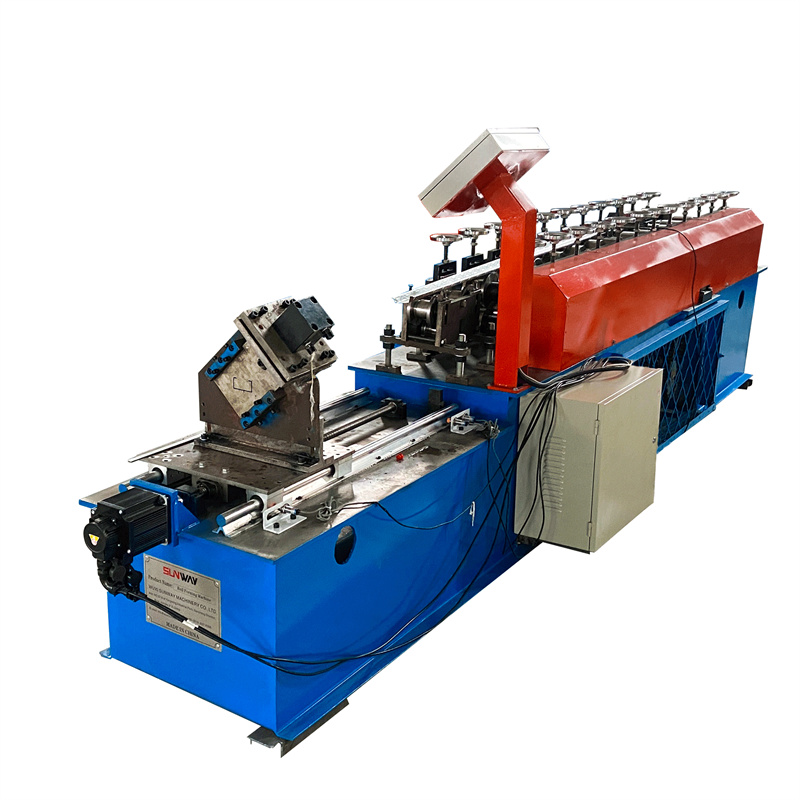

How does it work?
The metal stud and track roll forming machine for sale is a state-of-the-art, high-speed machine that can easily form metal studs and tracks for use in a wide variety of applications. This machine is fast, accurate, and efficient, making it a great choice for small businesses and professionals who need to create large quantities of metal products quickly and efficiently.
The metal stud and track roll forming machine for sale consists of two main sections: the presser bar, which applies pressure to the workpiece surface, and the die roller, which forms the metal studs and tracks. The presser bar is controlled by an electronic control system that adjusts the force applied to the workpiece according to desired specifications.
The metal stud and track রোল গঠন machine for sale has a number of other features that make it an excellent choice for sheet metal production. First, the machine has a high speed rating of up to 1,200 feet per minute, so it can handle even tough jobs with ease. Second, the Die Roller uses precision machining technology to produce accurate metal studs and tracks in any shape or size. Third, the machine has a built-in temperature controller that ensures consistent performance throughout processing. Finally, the machine is equipped with a number of safety features that help ensure safe operation while producing metal products.
-
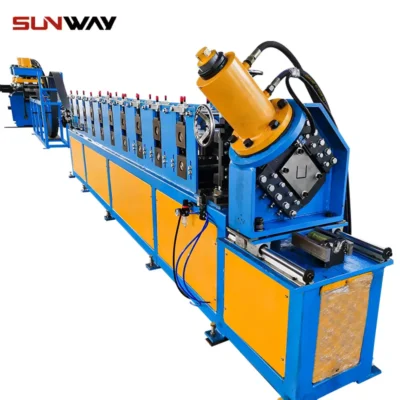 বৈদ্যুতিক মন্ত্রিসভা ফ্রেম রোল গঠনের মেশিন
বৈদ্যুতিক মন্ত্রিসভা ফ্রেম রোল গঠনের মেশিন -
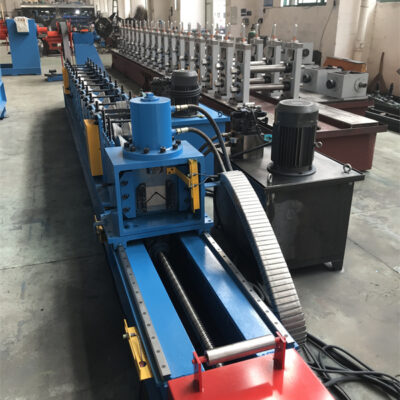 L কোণ রোল মেশিন গঠন
L কোণ রোল মেশিন গঠন -
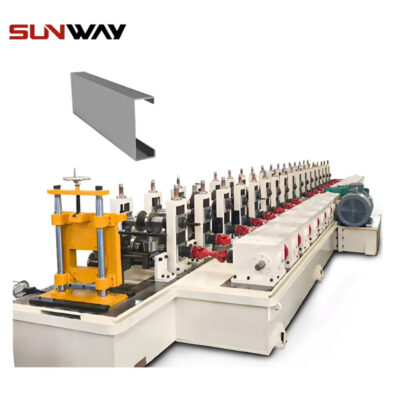 পিভি মাউন্টিং বন্ধনী সি শেপ প্রোফাইল রোল ফর্মিং মেশিন
পিভি মাউন্টিং বন্ধনী সি শেপ প্রোফাইল রোল ফর্মিং মেশিন -
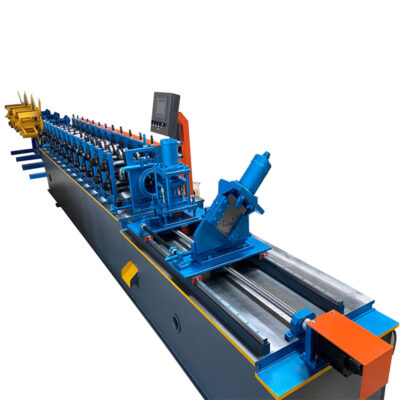 লাইট গেজ কেল স্টাড ট্র্যাক সি চ্যানেল স্টিল রোল ফর্মিং মেশিন ড্রাইওয়াল মেটাল সি স্টুড মেশিনারি
লাইট গেজ কেল স্টাড ট্র্যাক সি চ্যানেল স্টিল রোল ফর্মিং মেশিন ড্রাইওয়াল মেটাল সি স্টুড মেশিনারি -
 পিভি মাউন্টিং ব্র্যাকেট রোল ফর্মিং মেশিন (HAT / ওমেগা প্রোফাইল)
পিভি মাউন্টিং ব্র্যাকেট রোল ফর্মিং মেশিন (HAT / ওমেগা প্রোফাইল) -
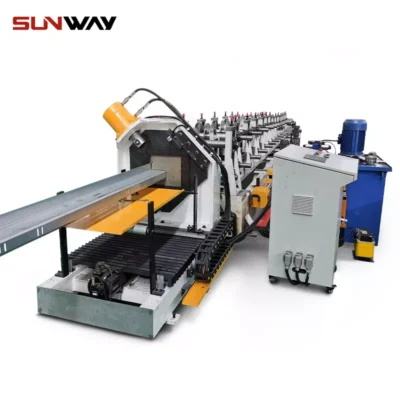 পিভি মাউন্টিং বন্ধনী জেড শেপ প্রোফাইল রোল ফর্মিং মেশিন
পিভি মাউন্টিং বন্ধনী জেড শেপ প্রোফাইল রোল ফর্মিং মেশিন
Benefits of a metal stud and track roll forming machine
A metal stud and track roll forming machine can be a valuable addition to your manufacturing operation. Here are some of the benefits:
- It speeds up the process. With a metal stud and track roll forming machine, you can quickly create custom metal parts.
- It reduces labor costs. With a metal stud and track roll forming machine, you can reduce the amount of labor required to produce custom metal parts.
- It increases production efficiency. A metal stud and track roll forming machine can help you increase your production efficiency by automating the process of creating custom metal parts.
Types of Sheet Metal the Metal Stud and Track Roll Forming Machine Can Make
There are a variety of types of sheet metal the metal stud and track roll forming machine can make, such as round, square, hexagonal, and octagonal. It can also create various shapes like circles, ovals, hearts, and stars.
The metal stud and track roll forming machine is a great option for those who want to produce high-quality sheet metal products quickly and easily. It is also a cost-effective way to create custom products.
Applications of the Metal Stud and Track Roll Forming Machine
The metal stud and track roll forming machine for sale is a perfect solution for businesses that need to produce custom sheet metal parts quickly and efficiently. This machine can create intricate patterns and designs in metal sheets, making it an ideal choice for products like car doors or bike frames.
The metal stud and track roll forming machine for sale is also perfect for businesses that need to produce large quantities of custom sheet metal parts. This machine is capable of producing up to 180 pieces of finished product per minute, which means that you can quickly and easily produce large orders of custom sheet metal parts.
Another great application for the metal stud and track roll forming machine for sale is in the production of automotive components. This machine is capable of producing high-quality patterns in aluminum, steel, or other metals, which makes it an ideal choice for the production of automobile exterior components.
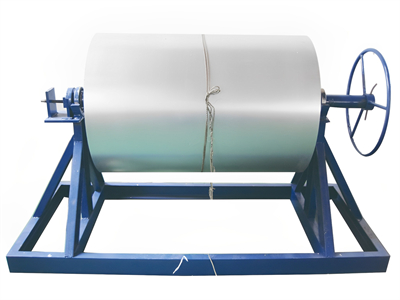
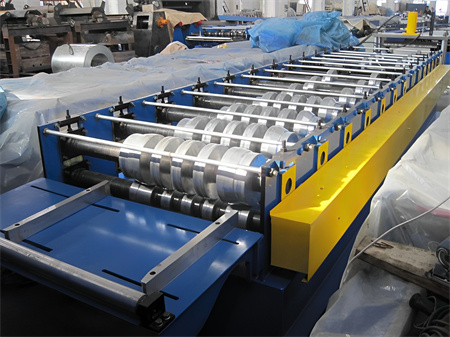
উপসংহার
Looking for a metal stud and track roll forming machine for sale that could help revolutionize the way you do sheet metal work? Look no further than the Hammerhead Metal Stud and Track Roll Forming Machine. This machine is specially designed to form metal studs and tracks, which is an essential part of many industrial applications. Not only does this machine make forming these components easier, but it also produces high-quality results time after time. If you’re interested in investing in a machine that could change the way you do your job, the Hammerhead metal stud and track roll forming machine for sale should definitely be at the top of your list.
Frequently Asked Questions (FAQ)
1) What profiles can a metal stud and track roll forming machine produce for drywall?
- Standard C-stud, U-track, and optional furring channels in gauges 25–18 (0.5–1.2 mm). Common sizes: 50/70/90/100 mm studs with matching tracks; custom punch patterns for service holes are typical.
2) What line speed and accuracy should I expect?
- Entry-level lines: 25–40 m/min. Best-in-class drywall stud lines: 60–120 m/min with cut-length accuracy ±0.5–1.0 mm using servo flying shear and encoder feedback.
3) Can one machine switch between stud and track without long downtime?
- Yes. Cassette tooling or quick-adjust roll sets enable changeovers in 5–15 minutes. Recipe-driven HMI presets adjust pass gaps, punching, and shear length automatically.
4) What materials and coatings run best?
- Galvanized steel (GI) G40–G90, zinc-aluminum alloy (GL), and pre-painted steel in 0.45–1.2 mm. Stainless and aluminum are possible with dedicated roll materials and adjusted pass design.
5) What certifications matter for export buyers?
- CE (EU Machinery Regulation), IEC 60204-1 electrical safety, ISO 12100 risk assessment. For North America, UL/CSA-listed components and NFPA 79 compliance are typically requested. Ask for full FAT documents and electrical schematics.
2025 Industry Trends: Metal Stud and Track Roll Forming
- High-mix, low-labor operations: Quick-change cassettes and automatic width gauges reduce labor and downtime.
- Punching 2.0: Servo-electric punching replaces pneumatic/hydraulic in many lines for quieter, cleaner operation and tighter hole-location CpK.
- Inline QA: Camera and laser systems verify cut length, hole position, and burr height to reduce rework.
- ESG and energy: Buyers track kWh/ton and scrap rates; regenerative drives increasingly standard.
- BIM-to-shopfloor: Direct import of profile data from BIM/ERP for automatic recipe selection and labeling.
2025 Benchmarks and Adoption Snapshot
| KPI | 2023 Typical | 2025 Best-in-Class | Impact | Source |
|---|---|---|---|---|
| Changeover time (stud ↔ track) | 20–30 min | 5–12 min | More uptime, smaller batches | OEM demos; customer case notes |
| Cut-length accuracy at 80 m/min | ±1.5 mm | ±0.7–1.0 mm | Fewer fit-up issues on site | EN 1090 shop practices; OEM specs |
| Hole position tolerance | ±1.0–1.5 mm | ±0.5–0.8 mm | Faster electrical/plumbing install | Inline vision vendor data |
| Scrap rate (GI 0.55–0.8 mm) | 2.0–3.0% | 0.8–1.5% | Cost and sustainability gains | Keyence/Micro‑Epsilon app notes |
| Energy intensity (kWh/ton) | 140–180 | 100–135 | Lower OpEx/ESG reports | ABB/Siemens energy guides |
| Inline QA adoption | ~15–25% | 40–55% | Real-time defect control | Vendor adoption surveys |
Authoritative references:
- ISO 12100 and ISO 9001: https://www.iso.org
- IEC 60204-1 Electrical safety: https://webstore.iec.ch
- EU Machinery Regulation overview: https://ec.europa.eu
- ABB Drives energy optimization: https://new.abb.com/drives
- Siemens motion/automation efficiency: https://new.siemens.com
- Keyence inline inspection: https://www.keyence.com
Latest Research Cases
Case Study 1: Quick-Change Upgrade Cuts Downtime in Drywall Stud Production (2025)
Background: A mid-size drywall framing supplier needed to run 50, 70, and 100 mm studs and tracks with frequent changeovers, causing >20% downtime.
Solution: Added cassette tooling for stud/track, servo flying shear, and HMI recipes linked to barcode job tickets; introduced inline camera for hole position verification.
Results: Changeover time reduced from 26 to 9 minutes; OEE improved by 14%; hole position CpK >1.33 at 90 m/min; scrap dropped from 2.6% to 1.3%.
Case Study 2: Noise and Energy Reduction via Servo Punching (2024)
Background: Plant faced noise complaints and rising energy costs on a hydraulic-punch stud and track roll forming line.
Solution: Replaced hydraulic unit with servo-electric punch module and regenerative drive; optimized pass progression for 0.6–0.9 mm GI.
Results: Average line noise reduced by 6–8 dBA; energy intensity decreased 17%; maintenance callouts cut by 30% due to fewer leaks and valves.
Expert Opinions
- Elena Rossi, Director of Engineering, Gasparini S.p.A.
“For stud and track, consistent hole location and cut-length accuracy drive installer productivity. Servo punching and encoder-based shears are now baseline for competitive bids.” - Dr. Wei Zhang, Professor of Advanced Manufacturing, Tsinghua University
“Integrating inline vision to close the loop on pitch and hole offset yields fast payback—especially on high-speed drywall lines where small errors become systemic.” - Jun Li, Operations Manager, Tier-1 Interior Systems Fabricator
“Recipe management plus cassette tooling let us run true high-mix schedules. We prioritize sub-12-minute changeovers over headline line speed.”
Practical Tools/Resources
- Roll design and simulation
- COPRA RF: https://www.datam.de
- UBECO PROFIL: https://www.ubeco.com
- Altair Inspire/Form: https://www.altair.com
- Standards and compliance
- ISO 12100 Risk Assessment: https://www.iso.org
- IEC 60204-1 Electrical Safety: https://webstore.iec.ch
- EU Machinery Regulation guidance: https://ec.europa.eu
- Inline quality and measurement
- Keyence vision/laser systems: https://www.keyence.com
- Micro‑Epsilon displacement sensors: https://www.micro-epsilon.com
- Maintenance/OEE
- UpKeep CMMS: https://www.onupkeep.com
- Fiix CMMS: https://www.fiixsoftware.com
Implementation tip: In your FAT, specify cut-length ±1.0 mm at target speed, hole position ±0.8 mm, burr height ≤0.05 mm, changeover (stud ↔ track) ≤12 minutes, noise limit ≤80 dBA at 1 m, and record energy intensity (kWh/ton) during the test with your coil gauge mix.
Last updated: 2025-10-23
Changelog: Added 5 targeted FAQs, 2025 trend table with benchmarks and sources, two recent case studies, expert perspectives, and practical tools/resources with an actionable FAT checklist.
Next review date & triggers: 2026-05-20 or earlier if new CE/Machinery Regulation guidance, major OEM releases on servo punching/cassette tooling, or updated benchmarks for energy and scrap are published.
